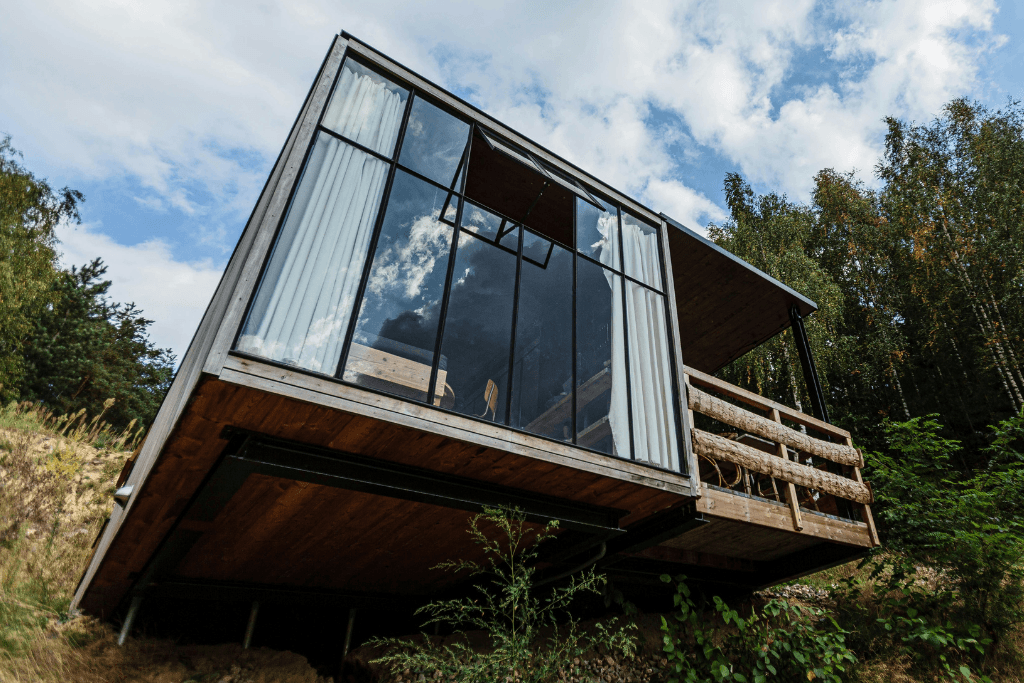The Tiny Living movement, also known as ‘living small,’ is a global phenomenon increasingly popular, particularly among Millennials. Its premise is straightforward: reducing living space to simplify life, cut costs, and lessen environmental impact. More than a practical solution to contemporary challenges, this approach fosters a more sustainable and mindful lifestyle.
Philip Jodidio, critic and author of the Taschen book ‘Small House,’ describes environmental minimalism as ‘a conscious turn towards sustainability and an exhortation to change one’s lifestyle.’ His commentary highlights the movement’s deeper ethos.
The Roots of the Movement

The Tiny Living movement emerged in response to several modern challenges, such as escalating living costs, increasing pollution, and a growing interest in minimalist, conscious lifestyles. Its core philosophy promotes living with less to enhance quality of life, emphasizing the essential and meaningful.
The popularity of Tiny Living has surged globally, with new projects developing worldwide. The movement has even won the endorsement of figures like Elon Musk, who, after renting a mini-house in Boca Chica, Texas, shared on social media, ‘It feels comfortable living in a tiny house.’
Tiny-Living Around the World

1. United States: Tiny Houses on Wheels
In the United States, the tiny house movement is deeply entrenched and widely recognized. Tiny houses on wheels are particularly popular among those seeking flexibility and mobility. A notable player, Tumbleweed Tiny House Company, offers customized mobile homes equipped with all essential amenities in a compact space. These homes allow for a nomadic lifestyle, as they can be parked in designated areas without sacrificing comfort.
2. Japan: Micro Apartments in Tokyo
In Tokyo, where space is at a premium and real estate prices are exorbitant, micro-apartments have emerged as a popular solution. These units, typically ranging from 20 to 30 square meters, are ingeniously designed to maximize every inch of space. Companies like MUJI have developed buildings composed entirely of these micro-apartments, providing compact, functional living solutions ideally suited for young urban professionals.
3. Ecovillages in Germany
In Europe, the Tiny Living movement frequently merges with ecological and community-focused initiatives. Germany hosts several ecovillages that epitomize this trend. One standout example is the Tiny House Village in Mehlmeisel, where residents inhabit eco-friendly tiny houses constructed from recycled materials and equipped with green technologies. This project exemplifies a sustainable, community-oriented lifestyle, emphasizing self-sufficiency and environmental responsibility.
4. The Netherlands: a new socio-urban phenomenon
In the progressive Netherlands, the ‘small is beautiful’ philosophy has been enthusiastically embraced, sparking a new socio-urban phenomenon. This trend features the emergence of single-family housing developments in urban suburbs, a response to the country’s significant housing shortage. Provinces like Utrecht, Delft, and Limburg are notable for their eco-friendly mini-houses, which showcase high levels of innovation, environmental sustainability, and flexibility.
5. Australia: Tiny House Festivals
In Australia, the Tiny Living movement is expanding rapidly, evidenced by the increasing number of festivals dedicated to tiny houses. Events like the Tiny House Festival Australia serve as platforms where builders, aspiring owners, and enthusiasts can exchange ideas and innovative solutions. Characteristically, Australian tiny houses blend elegant design with practical functionality, aligning seamlessly with the nation’s robust outdoor lifestyle.
The Benefits of Tiny Living

- Environmental Sustainability: Small houses consume fewer resources, reduce carbon emissions, and often utilize renewable energy sources.
- Reduced Costs: With less space to heat, cool, and maintain, operational costs are significantly lower.
- Minimalist Lifestyle: Living in a confined space encourages owning only what is essential, promoting a minimalist mindset.
- Flexibility and Mobility: Many tiny houses are built to be mobile, providing the freedom to relocate without sacrificing home comfort.
An innovative answer for living better with less

The Tiny Living movement offers a creative and practical solution to contemporary challenges. Whether it’s a tiny house on wheels in the US or a micro-apartment in Tokyo, the principle is consistent: live better with less. As societal dynamics evolve, an increasing number of people are recognizing that the quality of life is not necessarily about the amount of space we occupy, but rather how efficiently and meaningfully we use it.





